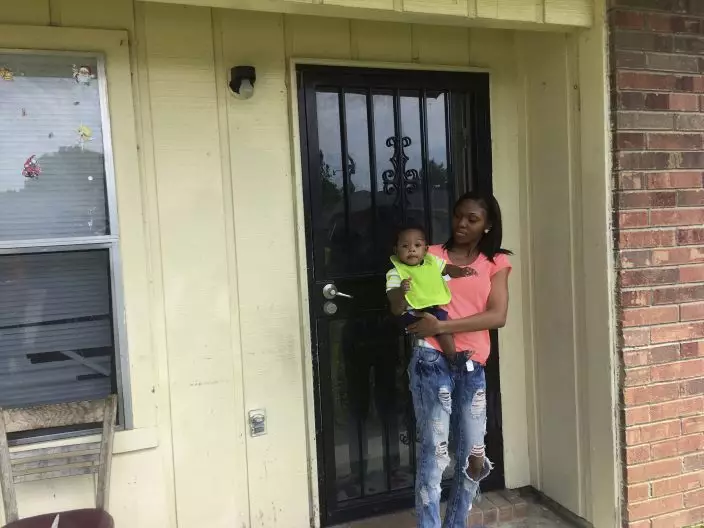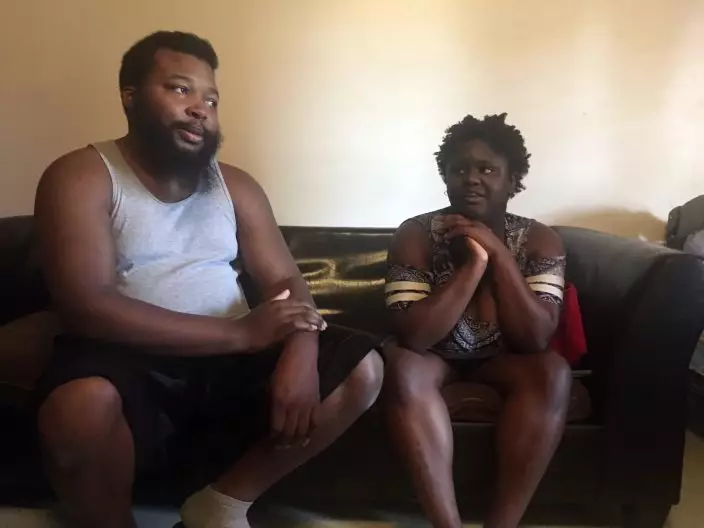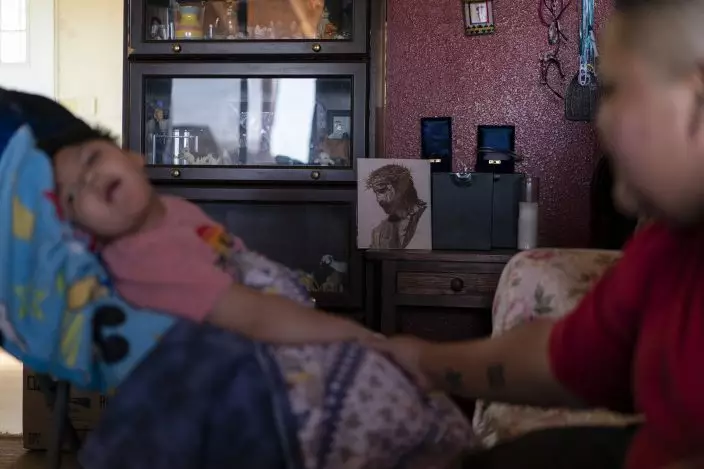Childhood disparities around malnutrition, graduation rates, and early deaths are worst among rural, black-majority counties in the American South and isolated counties with Native American populations, according to a new report.
Those inequities put these populations more at risk for the novel coronavirus, the report by Save the Children concludes.
“The Land of Inopportunity: Closing the Childhood Equity Gap for America’s Kids” report released Tuesday found that children in the most disadvantaged counties die at rates up to five times of children in the same state. Children in those counties also are 14 times as likely to drop out of school and are three times as likely to lack healthy food and consistent meals, the report said.

FILE - In this May 9, 2018, file photo, Starr Jones, 21, stands outside her Shelby, Miss., apartment with her 9-month-old son, Jarvis Kemp, after talking with the nonprofit group Save the Children about her community work to fight poverty. A Save the Children report released Tuesday, June 2, 2020, says childhood disparities around malnutrition, graduation rates, and early deaths are worst in the U.S. among rural, black-majority counties in the American South and isolated counties with Native American populations. (AP PhotoRussell Contreras, File)
Using federal data from 2018 and examining more 2,600 counties, the report found that about a third of the 50 worst counties are majority African American and a quarter are majority Native American.
The counties of Kusilvak (Alaska), Todd (South Dakota), Madison (Louisana), Carson (South Dakota), and Bethel (Alaska) were the five worst-ranked, the report found. Todd County lies entirely within the Rosebud Indian Reservation and Madison Parish is 61% black.
“These are just stunning statistics,” said Mark K. Shriver, senior vice president of U.S. programs & advocacy at Save the Children. “Children growing up rural areas, for instance, are more likely to die before their first birthday at a rate to 20% than in large urban areas.”

Angelina Dinehdeal wipes tears from her eyes as she sits with her 8-year-old daughter, Annabelle, on the family's compound in Tuba City, Ariz., on April 20, 2020. The family has been devastated by COVID-19. The Navajo reservation has some of the highest rates of coronavirus in the country. If Navajos are susceptible to the virus' spread in part because they are so closely knit, that's also how many believe they will beat it. (AP PhotoCarolyn Kaster)
The inequality comes from the lack of early childhood education, health care, and job training options in those areas, the report said.
So far, children in some of the poor counties cited in the report live among the areas hardest hit by COVID-19. New Mexico's McKinley County, which sits on the Navajo Nation — a tribe suffering amid the pandemic — is ranked near the bottom in child hunger and graduation rates.
According to the report, Louisiana, Mississippi, and New Mexico are the lowest-ranked states for this childhood disparities.

FILE - In this May 9, 2018, file photo, Travis Johnson, 27, and his girlfriend, Chanika Green, 18, sit in this Shelby, Miss., apartment and talk with the nonprofit group Save the Children about their community's fight against poverty. A Save the Children report released Tuesday, June 2, 2020, says childhood disparities around malnutrition, graduation rates, and early deaths are worst in the U.S. among rural, black-majority counties in the American South and isolated counties with Native American populations. (AP PhotoRussell Contreras, File)
New Jersey, Massachusetts, and New Hampshire earned the highest marks.
Save the Children recommends states and local governments invest more in early childhood education programs.
The report comes more than a half-century after the late U.S. Sen. Robert Kennedy — Shriver’s uncle — embarked on a tour across the country to highlight the nation’s most impoverished regions. Kennedy visited Mississippi and South Dakota’s Pine Ridge Indian Reservation and was transformed by the hunger and inequality he saw.

On a small table next to an image of Jesus in a crown of thorns, the ashes of Gloria Uriarte, right and her mother, Eva Dinehdeal, are displayed on a table in Tuba City, Ariz., on April 22, 2020. In the foreground at left is Gloria's son, Curly, as his aunt Christina Dinehdeal holds his hand. The Navajo reservation has some of the highest rates of coronavirus in the country. If Navajos are susceptible to the virus' spread in part because they are so closely knit, that's also how many believe they will beat it. (AP PhotoCarolyn Kaster)
It also comes more than a half-century after President Lyndon Johnson’s Kerner Commission report, which sought to examine urban poverty and riots across the nation.
Former U.S. Sen. Fred Harris of Oklahoma, the last surviving member of the Kerner Commission, said he’s not surprised by the report since the number of U.S. residents in poverty has grown in 50 years.
“And most of that growth in poverty has been among children,” Harris said from his home in Corrales, New Mexico. “This is a great unfairness in our system.”
Associated Press journalist Russell Contreras is a member of the AP’s race and ethnicity team. Follow Contreras on Twitter at http://twitter.com/russcontreras


